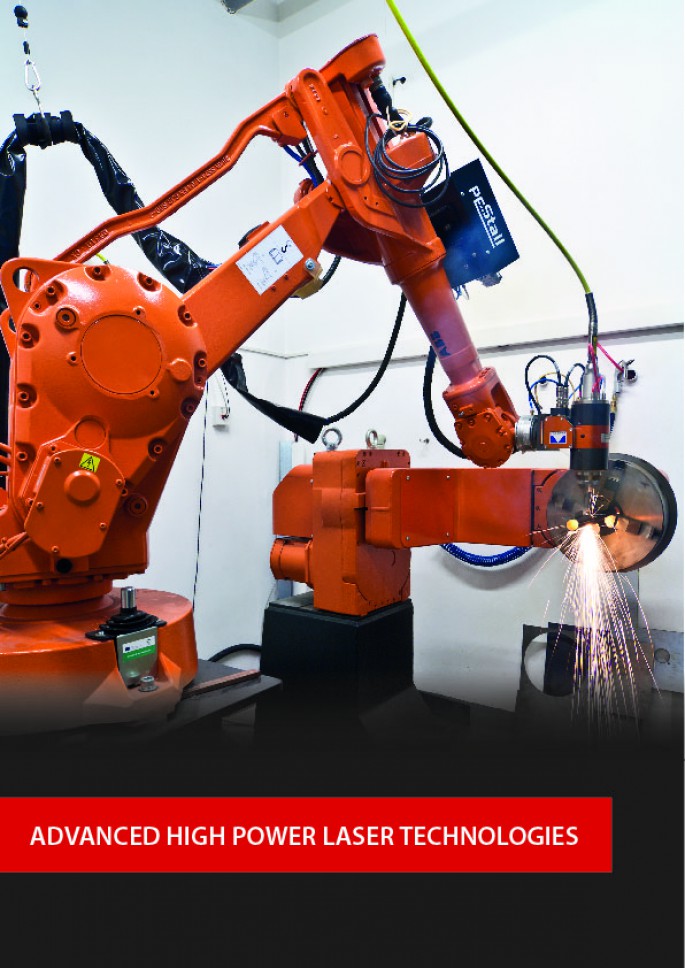Laser Technology

Technologies that use a laser beamforwelding, drilling, cutting or hardening are among the progressive and promising methods that allow manufacturers to increase the value of their products or create new products that cannot be made by different methods. Technological demands make it difficult for small andmiddle-sized companies to buy suchmachinery. It's economical benefits are not immediate as it is necessary to improve the process and, especially in case of laserwelding, to perform a number of technological tests. These are some of the reasons we are creating a facility at ISI that will also offer state-of-the-art laser technologies in the form of a service.
Advanced high power laser technologies
The principle of laserwelding takes advantage of high energy density (approx. 07W/cm2) in the area illuminated by the beam, which results in an immediate evaporation of the material with a minimum heat dissipation into the surrounding area. This process creates a cylindrical hole filled with evaporatedmetal at a pressure which prevents the liquidmetal fromclosing the hole. If the beam is thenmoved at an appropriate speed the hole follows the beamand a very narrowbut very deep weld can be created.This process does not need to take place in a vacuum– a protective atmosphere is applied to thewelded spot to suppress oxidation. If a higher pressure process gas is applied along with the beam, the melted material is blown away, which results in cutting instead of welding. Compared to other welding or cutting methods the use of a laserminimizes the heat impact on thematerial, thereforeminimizing deformation.
A fibre laser is used at ISI. The laser is connected to two application heads for cutting andwelding. The cutting head is connected to a robotic armthrough its own independent linear axis.This axis uses an integrated feedback system to keep the cutting head at a constant distance from the material, which is one of themost critical requirements in the cutting process. Thewelding head is equipped with a coaxial camera that allows a direct view of the welding process. The application heads are positioned by a six-axis robotic arm. Additional positioning of the processed part is realized by a two-axis positioning systemconnected to the robotic arm's control system. The highest possible flexibility is achieved in this manner.
Laser parameters:
- laser output: 2 kW;
- robotic arm reach: .6 m;
- positioning system load capacity: 250 kg;
- maximum weld depth: approx. 5 mm;
- maximum cut width: approx. 5 mm;
- process speed: up to 0 m/min.
Examples of high power laser use:
- Laser beamlap jointwelding of two ormore sheets up to a total thickness of 5mm, square butt joint welding up to a total thickness of 5mm, welding ofmetal sheets,mouldings, profiles and pipes, carbon and stainless steel, titanium and other metals and alloys, welding of materials coated with another metal (usually Zn, Al).
- Laser cutting ofmetal sheets,mouldings, profiles and pipes up to approx. 5mmthick, carbon and stainless steel, titaniumand othermetals and alloys,materials coatedwith anothermetal (usually Zn, Al) or with a protective foil.
- Laser drilling ofmetallic and ceramicmaterials shows a highwidth/depth ratio (up to :30)when the laser is operated in a pulsed regime.
- Very small area hardening ofmaterials capable of producingmartensitic structure up to approx. mmin depth.
- Technological and prototype testing.
- Welding process research aiming at diagnostics and active control of the process and also the study of the weldability ofmaterials.
Virtual guide of laboratory












